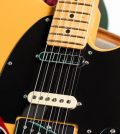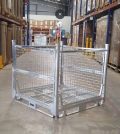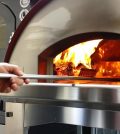7 Children Toys and Activities for Fine Motor Skills and Overall Development
During their first year, babies make enormous developmental progress. They learn to lift their heads, sit on their own, roll over, crawl, and stand up, all within the first 12 months. As parents, we are very focused on the previously mentioned gross motor skills milestones, but it is also critical to focus on the fine motor skills.
What are fine motor skills, and why do they matter?
They’re movements that involve smaller muscle groups in the hands and wrists, as well as the feet and toes. Early fine motor skills include actions such as grasping, holding, pressing, and using a pincer grip. These motor skills are required for everyday activities such as dressing, eating with plates and cutlery, and tying shoe laces.

What baby toys are available to aid in the development of fine motor skills?
Children learn best through play and everyday activities that involve grasping, moving different muscles and parts of the body, focusing their eyesight, and balancing. Toys can be an excellent way to encourage skill development while also providing lots of fun.
During the baby’s first year, you can incorporate toys that stimulate and encourage play, and at the same time promote fine motor skill development into your daily routines (and beyond). You’re assisting their muscle and sensory development, as well as their confidence and ability to engage in independent play and activities.
1. Stacking and Sensory Montessori Toys
Stacking toys are excellent for helping children develop their fine motor skills. Picking up and placing objects helps the child develop hand muscles and muscle control. However, stacking not only improves children’s fine motor skills, but it also helps them develop better eye-hand coordination, depth perception, and spatial perception (like under and on).
They also assist children in understanding physical laws such as gravity and balance. Overall, they are an excellent learning resource. The sought-after sensory and stacking Montessori toys can help your child improve their motor skills and overall development. Rather than simple distractions or entertainment, Montessori are the toys created to promote learning and engagement.

2. Bath Playtime Cups
Bath toys do not have to be sophisticated for your baby to learn and practise fine motor skills and hand-eye coordination. Basic small cups are ideal for practising filling, pouring, and measuring, as well as teaching concepts like less and more. Choose cups with small holes for a fun shower effect in which the water flows out at different speeds.

3. Beach Toys
Sand play, like bathtime play, is both entertaining and educational. Handling small shovels and filling and emptying buckets help children develop fine motor skills and hand-eye coordination, as well as an understanding of volume and capacity. Furthermore, sand play is excellent for exploring sensory development and developing the child’s tactile sense (e.g. his or her sense of touch, resistance, and temperature).

4. Rattle Toys
A rattle is frequently the first toy given to a baby. The child must develop their grasp reflex in order to hold the rattle, and because they are so naturally inclined to be curious, they will not stop trying until they know everything about this object. That’s why this kind of toys is so beneficial.
They will need to learn to hold and shake the rattle as their fine motor skills develop, teaching them about movement and sound. Rattles provide auditory stimulation because shaking, banging, or playing with the rattle’s small pieces produces different sounds. Babies need these toys to learn and explore different tones, rhythmic patterns, and volume levels.

5. Scooters and Bikes
This is a must-have for all children. No childhood is complete unless a child learns to ride a bicycle on their own! Pushing and pedalling a bike or scooter requires a lot of coordination and strength, which children must learn as they progress through the gross motor milestones.
From small motorbikes for little ones to tricycles, scooters, and eventually, bicycles, all of these wheeled rides are excellent investments. However, instead of a motorised vehicle, opt for classics that will have your child whizzing around looking for adventure while developing their gross and fine motor skills.

6. Hula Hoops
Hula hoops can be used for a variety of gross motor skill activities. Use them as a hoop to throw balls through, a hopscotch court, or an adventure crawl through. Hula hoops are cheap and can be used in a variety of ways. You can purchase a set of different sizes similar to a stacking Montessori toy for them to use on various parts of their body and share with their friends and siblings.

7. Bean Bags
A simple item, such as a bean bag, can inspire a fun game that develops multiple skills. Bean bags can be purchased or made at home. There are numerous online tutorials for making them if you feel like using your DIY skills. The reason these toys are so useful has to do with the number of activities you can use them for.
For example, you can walk in a straight line while carrying them on your head, throw and catch them, toss them into a basket or cornhole board, or hide them for a fantastic game of bean bag hide and seek. Bonus points if you make them colourful and more appealing for your kids to be interested in them.








